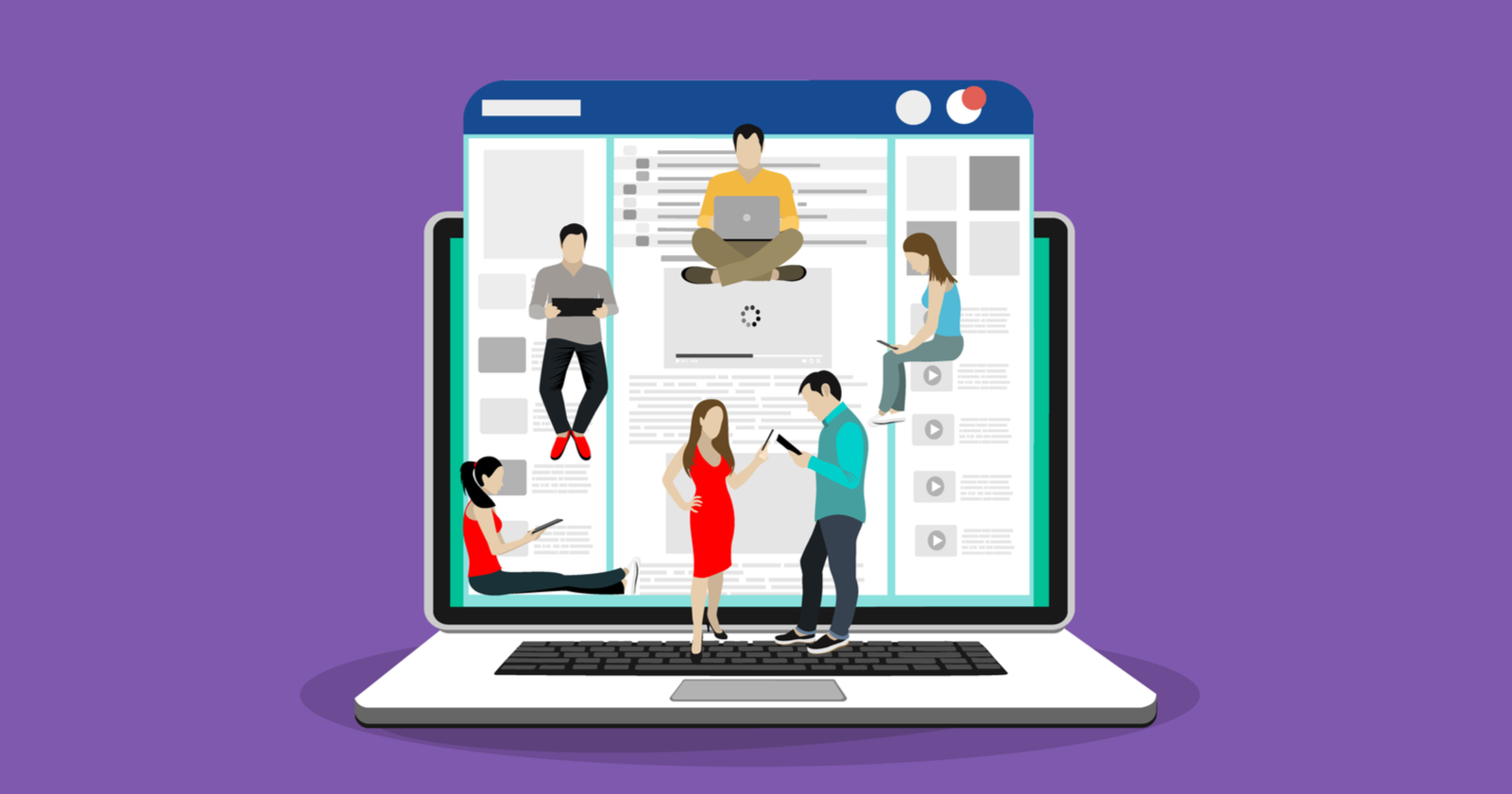Facebook’s organic reach has declined.
By a lot.
The average organic reach versus page likes is a whopping 5.17%, meaning only about 5% of your fans are actually seeing the content you’re sharing on Facebook organically.
Facebook is still one of the top social media networks for brands to be on, though.
Regardless of what kind of brand, size, or service offerings, Facebook has become the Google of social networks and isn’t going anywhere anytime soon.
With Marketplace, Groups, Messenger, Pay, Instagram ownership, and so much more, the social media giant is a one-stop social media shop for a user to do almost anything on a single network.
This forces all brands to have a presence, a very established one, on the social network and remain active updating business information, sharing new content, and communicating with their fans.
By now though, most of us have come to realize in order to succeed on Facebook one must pay-to-play, especially with organic reach percentages so low.
But there is another workaround if you aren’t ready to fork out the big bucks for that extra post reach.
Cue drumroll….
Facebook Groups.
Brands can and should be using Facebook groups as a way to ensure their most important content is actually seen by their target demographic and as another way to communicate with potential and existing customers.
Let’s explore the many different ways brands can utilize Facebook groups for marketing.
Introduce New Products & Services in Your Branded Facebook Group
A branded Facebook group is simply a group that is created by a brand/company, has employees as the admins, and usually consists of core fans and newbies as group members.
This kind of group makes it the perfect place for a brand to collect any kind of feedback on a new product launch, run by new service ideas, or introduce new content and company updates.
It’s also the perfect place to gather your top customers and potential new ones, ultimately creating an intimate community around the brand.
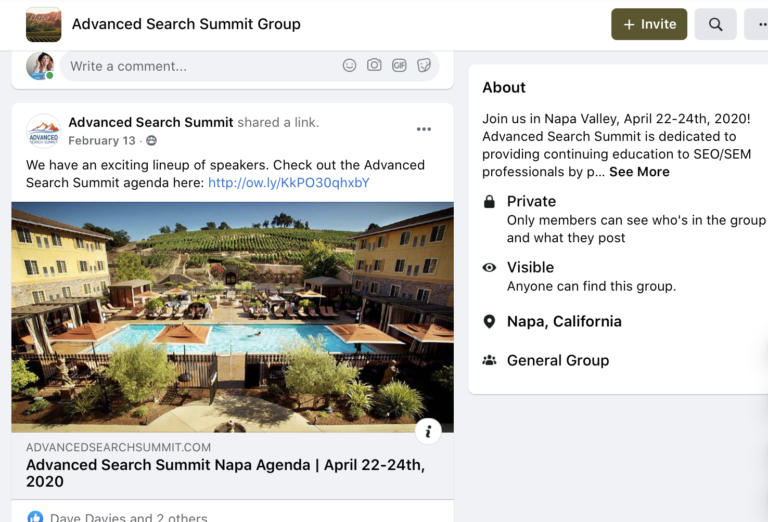
You can do all of these tasks inside of your branded Facebook group by simply posting updates or by having a watch party of an upcoming product launch.
This gives the Facebook group users the first look at your newest product line.
Not only does this promote excitement over your post, but you’ll naturally get comments featuring opinions about it.
This will give you plenty of feedback on what to expect when you share it with the public in a future marketing campaign.
Make sure to spread out a mix of your post types inside your group, just like you do on your Facebook Page.
For example, a good content mix for a branded Facebook group looks like this:
- Monday: Weekly inspiration post.
- Tuesday: Memes/fan engagement post.
- Wednesday: News/company updates.
- Thursday: Memes/fan engagement post + News follow up post.
- Friday: Poll/fan engagement post.
Branded Facebook groups are a great place to collect feedback and perform audience research on a core group of fans.
Dive deep into audience research by hosting a social learning group.
This is similar to regular groups but allows admins more features like how posts are displayed and the way users engage with them – ultimately giving you more data.
As you collect information about your new products, content, or services, pay extra attention to who is leaving the feedback.
Are they your target demographic?
Are they existing customers from your database or new to your brand?
Check their Facebook profiles to – at the very least – identify their gender, age, and location.
When in doubt, simply ask the group members what kind of content, products, or services they want to see next from you.
And be on the lookout, because members of Facebook groups are not afraid to speak up.
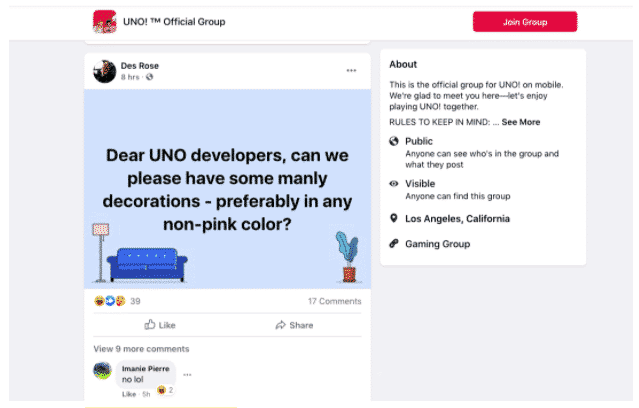
Provide Customer Service Through Facebook Groups
Brands should always utilize groups to share new products and updates, but one of the biggest benefits for brands to use Facebook groups is to provide another layer of customer service.
We recently did a social ad campaign to help grow a Facebook group for an appliance parts company.
I think we can all agree appliance parts aren’t the most captivating thing on the internet these days, especially for a whole Facebook group.
Yet, the group became one of their top revenue sources from social media simply because it became a resource for customers and potential customers to ask the brand questions and communicate shared experiences of broken appliances with other customers.
This resulted in new purchases made because solutions were provided inside of this group, both by employees and fellow customers.
The parts company dedicated a whole new department of content just for inside of this group.
Providing how-to videos, installation tips, and guides so any member of the group received dedicated customer support and educational content.
Sure, a customer can always call that 1-800 number or fill out a contact form, but there is a different human component of going to a brand’s Facebook group and posting a question.
It’s a more neutral place to share experiences and get solutions from the real people behind a brand, the ones who are admins of the group, and fellow customers who have already worked with the brand.
With a branded Facebook group, a customer can come to your new group and share their questions and get real answers from real people.
This is a huge win as it gives you the opportunity to address the questions and have the responses seen by other members of the group, potentially addressing other people’s questions and providing even more solutions.
Which brings me to the next benefit of marketing with Facebook groups: user-generated content.
Collect User-Generated Content From Facebook Groups
Facebook groups are notorious for collecting reviews and testimonials, without looking like a 1-star rating on Google.
You can simply ask users to share a post or a photo, participate in a poll, or leave a comment.
And after frequent activity in the group (regular posting from admins and conversations from both the admins and users), you’ll find group members doing this on their own.
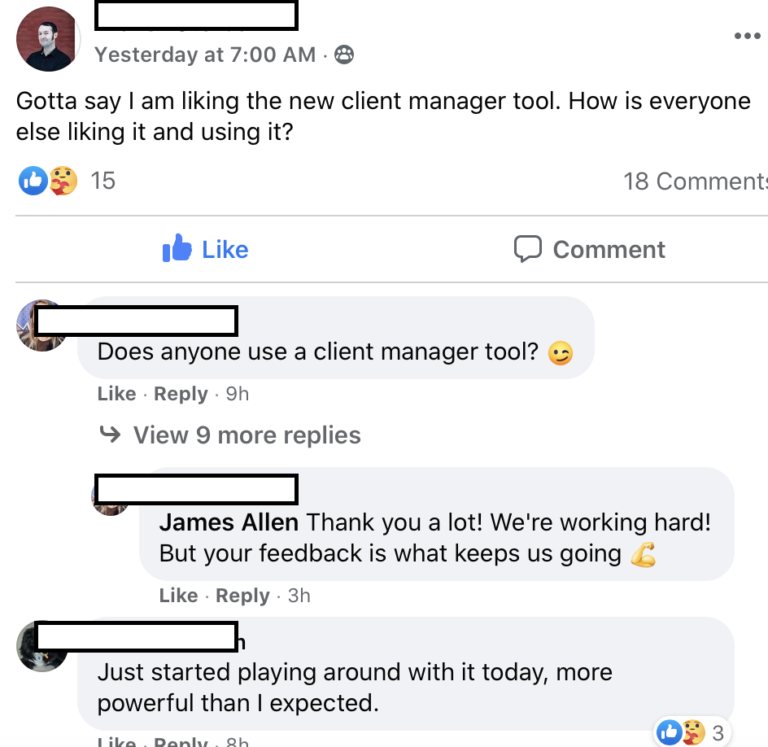
Here’s where you, as the brand, have multiple marketing opportunities to take advantage of.
First, you can collect these comments, videos, and images as user-generated content (getting permission from the user first, of course).
This is the kind of real-life content that does so well when shared by a brand on other social networks like Instagram, blog posts, and email campaigns.
The second opportunity brands have is to find new brand ambassadors inside of Facebook groups.
When you’re a fan of a brand – a loyal one – you’re happy to comment and refer the brand to others.
When this is done in groups, brands can reach out to those fans after seeing their post or comment and thank them for mentioning their brand.
The extra-bonus step here is to contact the person through messenger and offer them a 10% discount or free product as a way of saying thanks for spreading the word about your brand.
Join the Conversation & Monitor Brand Sentiment as a Business Owner
Now thinking outside of your branded Facebook group, you can join other Facebook groups as your Facebook Page or as a user.
When it comes to marketing on Facebook Groups though, you may want to consider joining as a user first.
Joining as a user instead of a business page helps add that human component and gets your comment or post read, instead of ignored once the logo is seen.
According to Bambu, people are 16 times more likely to read a social post from a friend versus a brand.
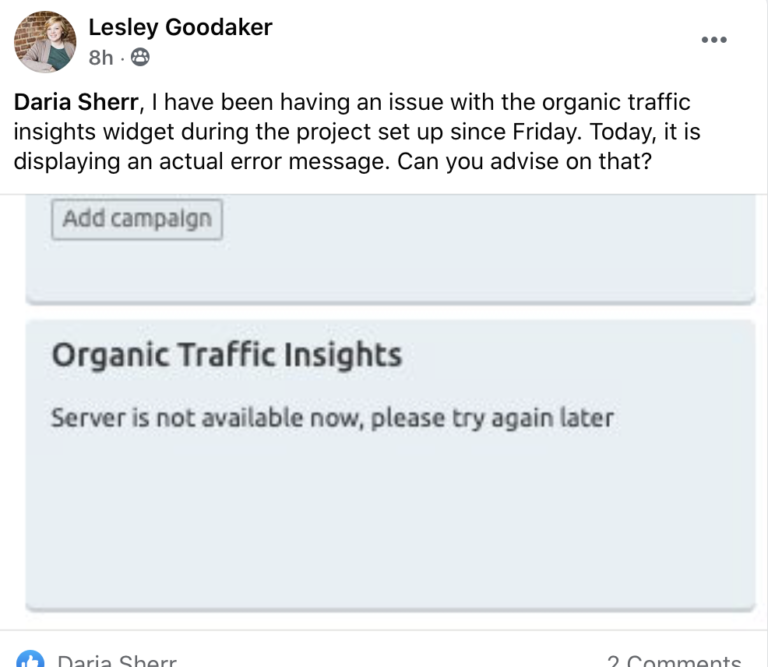
This gives you the opportunity to speak up as an individual if anyone talks about your business or brand in one of these local groups from an employee or business owner perspective.
And be more likely heard than if you commented as the brand itself.
Be aware though, not everything people share in groups is positive, and to help keep track of your brand sentiment as a business you need to be aware of all conversations related to your brand.
So if you run across a negative comment about your brand in a Facebook group or even in your own group, make sure you avoid using the corporate reply:
“Karen, we’re so sorry to hear you experienced that. Please call our 1-800 so we can make it right.
– Mike, Home Depot Oregon”
Instead, provide more comfort with a human response from your own profile:
“Oh no! That is not at all what we are trying to represent at X Depot, Karen. I’m so sorry you had that experience. I’ve been the Store Manager there for the past 9 months and want to make things right with you. I’ve sent you a DM and we’ll figure out a better solution for you.
– Mike Reed”
Become the Talk of the Town (Or Industry) While Monitoring the Talk
When I moved to Oregon from California I quickly joined as many local Facebook groups as I could so I could get a feel for the new area and start collecting recommendations.
As we’ve remodeled our home, every contractor we’ve worked with we’ve found as a recommendation in a local Facebook group – not once heading to Google.
Facebook groups have such a huge impact on local businesses and have become a hub for local business recommendations from real customers.
Even if your brand isn’t limited to local-only services, you should join several local Facebook groups with your Facebook profile and sign up for notifications for the groups so you’re aware each time a new post is shared.
Especially the ones who need recommendations.
There’s a big chance you can comment and contribute to that conversion offering advice or even your local service as a solution.
Non-local businesses can do this on a similar scale, joining groups related to their industry or product.
For example, that appliance parts client not only created their own branded Facebook group to offer a more casual form of customer service but it also joined several DIY home improvement groups.
This gave them the opportunity to drop in and leave a solution as a comment to someone who was running into any issues trying to fix their appliance (a.k.a., needing a new part).
Which in the end, isn’t it the goal of any marketing strategy to provide a solution to a customer’s problem utilizing your service or product?
Facebook groups work best when you utilize them as a place for two-way communication, both asking and listening to the group members.
Ready to go create your branded Facebook group?
Here’s how from Facebook.
Facebook Group Marketing: Key Takeaways
- Ask for feedback on new services and products in your branded groups.
- Create a Facebook Group as another way to provide customer service, having a dedicated member of your team as the admin.
- Collect comments, videos, and images shared in Facebook groups as user-generated content (with permission granted).
- Discover new brand ambassadors and influencers inside of Facebook groups.
- Join other Facebook groups to keep track of brand sentiment.
More Resources:
- 13 Interesting Facebook Tricks You Might Not Know
- Facebook Group vs. Facebook Page: What’s Better for Your Brand?
- How to Dominate Social Media Marketing: A Complete Strategy Guide
Image Credits
All screenshots taken by the author, November 2020



